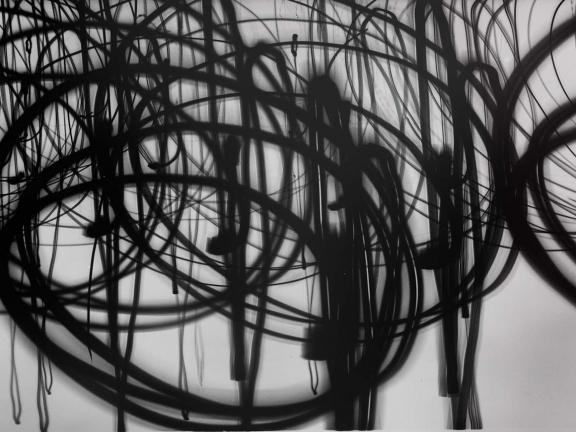Reviving Bauhaus abstraction after World War II
“Postwar Visions” looks at the work of European photographers who, after hostilities ended in 1945, chose to use their cameras to express their creative impulses. Some of these artists returned to Bauhaus ideas about art making that had been interrupted by the political repression of the 1930s and six long years of war. An influential center of this new work was located in Germany, where Otto Steinert, a medical doctor turned photographer, organized a group of artists who used the camera to explore the inner self through abstract imagery. They found intriguing patterns in nature and in the built environment, and they also took inspiration from mundane visual details of daily life. In the 1950s, Steinert organized a number of exhibitions titled Subjektive Fotografie (Subjective Photography), bringing international attention to their approach and inspiring photographers around the world to explore elements of abstraction in their work.
“Postwar Visions: European Photography, 1945–60” investigates this rise of mid-century creativity in an assemblage of approximately 35 works. Steinert’s Luminogramm (1952), made by the light of a flashlight, captures the playful spirit of the movement. Other images in the exhibition are meditative observations of daily life, such as rain droplets streaming down a windowpane, a bicyclist gliding down a winding road, the gentle curves of a nude. The exhibition is organized into four sections—pure abstractions, still life, daily life, and industrial subjects—and also features the work of Peter Keetman, Toni Schneiders, Mario Giacomelli, Nino Migliore, Sabine Weiss, Jean-Pierre Sudre, and more. The photographs are drawn primarily from the MFA’s collection, with a number of significant loans from private collections. “Postwar Visions” is a companion exhibition to “Radical Geometries: Bauhaus Prints, 1919–33,” which explores abstraction in European graphic art during the interwar period.
- Herb Ritts Gallery (Gallery 169)
